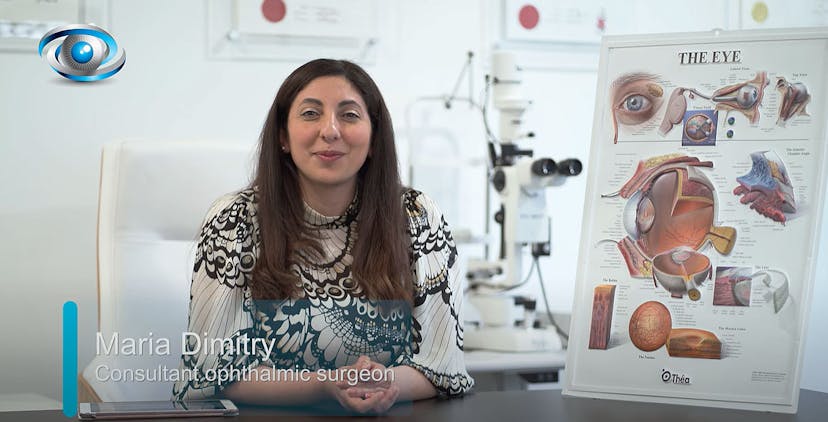
In a world dominated by screens and artificial lighting, the quest for natural vision correction has become more relevant than ever. The allure of clear, unaided vision is a universal aspiration, prompting many to seek alternatives to conventional eyewear. Natural vision correction methods harness the power of lifestyle adjustments, eye exercises, and holistic approaches to promote optimal ocular health. These techniques not only offer the promise of clearer vision but also advocate for a harmonious connection between our eyes and the world they behold. Join us on a journey to explore the fascinating realm of natural vision correction, where ancient wisdom meets modern science in the pursuit of visual clarity.
How To Restore 20/20 Vision Naturally?
Restoring 20/20 vision naturally involves adopting a holistic approach that encompasses lifestyle changes, eye exercises, and practices aimed at improving overall eye health. While natural methods may not work for everyone and may not be a quick fix, they can potentially lead to improved vision for some individuals. Here are some strategies that people can consider:
Healthy Diet and Nutrition
Eating a balanced diet rich in vitamins and minerals is essential for maintaining good eye health. Foods high in antioxidants, such as fruits and vegetables, can support ocular function.
Stay Hydrated
Proper hydration is crucial for overall health, including eye health. Drinking an adequate amount of water helps maintain the moisture levels in the eyes.
Regular Eye Exercises
Eye exercises can help strengthen the eye muscles and improve focus. Techniques like the 20-20-20 rule (every 20 minutes, look at something 20 feet away for at least 20 seconds) can reduce eye strain from prolonged screen time.
Palming
Rubbing the palms together to generate heat and then gently cupping them over closed eyes can provide relaxation and relieve eye strain.
Blinking Exercises
Purposeful blinking at regular intervals can help lubricate the eyes and reduce dryness.
Near-Far Focus
Holding an object close to the eyes, then shifting focus to a distant object, and alternating between the two can improve flexibility and focus.
Adequate Sleep
Getting enough restorative sleep is crucial for overall health, including eye health. It allows the eyes to recover and rejuvenate.
Reduce Screen Time
Prolonged exposure to screens can strain the eyes. Taking regular breaks and maintaining an ergonomic screen setup can help alleviate digital eye strain.
Avoid Eye Rubbing
Rubbing the eyes can irritate and potentially worsen vision. It's important to resist the urge to rub the eyes.
Maintain Proper Lighting
Ensure that the environment is well-lit to reduce eye strain. Avoid reading or working in dimly lit areas.
Avoid Smoking
Smoking has been linked to a higher risk of eye diseases. Quitting or avoiding smoking can support overall eye health.
Protect Eyes from UV Rays
Wearing sunglasses that block harmful UV rays can help prevent eye damage caused by sun exposure.
Regular Eye Check-ups
Routine eye exams by an optometrist or ophthalmologist are important for monitoring eye health and detecting any potential issues early.
While natural methods can be beneficial for some, they may not lead to 20/20 vision for everyone, especially for those with severe refractive errors. In such cases, consulting with an eye care professional for personalised advice and treatment options is crucial. They can provide recommendations based on an individual's specific eye health and vision needs.

What Is The 6 Second Method?
The "6-Second Eye Method" is a simple exercise designed to reduce eye strain and promote relaxation for individuals who spend extended periods of time looking at screens, particularly computer monitors or smartphones. The exercise is straightforward and can be easily incorporated into a daily routine. Here's how it works:
- Step 1: Blink for 6 Seconds
- Begin by sitting comfortably with your eyes open.
- Blink rapidly for approximately 6 seconds. This helps to moisturize the eyes and reduce dryness, which can occur during prolonged screen time.
- Step 2: Close Your Eyes for 6 Seconds
- After blinking, close your eyes gently for about 6 seconds.
- Allow your eyes to rest and recover from the strain of staring at the screen.
- Step 3: Look into the Distance for 6 Seconds
- Open your eyes and focus on an object or point in the distance, approximately 20 feet away, for roughly 6 seconds.
- This helps to shift your focus and reduce the intensity of near-point stress.
- Repeat as Needed
- You can repeat this cycle of blinking, closing your eyes, and looking into the distance as often as necessary throughout your screen time to help reduce eye strain.
The 6-Second Eye Method is a quick and easy exercise that encourages regular breaks from screen usage, allowing your eyes to relax and reducing the risk of digital eye strain. It's especially beneficial for individuals who spend long hours working on computers or engaging with electronic devices. Remember to also ensure that your screen is set up ergonomically and that you maintain proper lighting in your workspace to further reduce eye strain.

What Is Considered Bad Eyesight?
"Bad eyesight" is a subjective term and can vary depending on individual circumstances and needs. It typically refers to vision that is significantly impaired, to the point where it affects daily activities and quality of life.
In terms of problems associated with vision, "bad eyesight" may encompass:
- Nearsightedness (Myopia)
- Difficulty seeing distant objects clearly.
- Needing to get closer to objects to see them clearly.
- Farsightedness (Hyperopia)
- Difficulty seeing close-up objects clearly.
- May require effort to focus on near objects, leading to eye strain or headaches.
- Astigmatism
- Blurred or distorted vision is caused by irregularities in the shape of the cornea.
- Presbyopia
- Age-related difficulty in focusing on close-up objects often occurs in people over 40.
- Severe Refractive Errors
- Very high prescriptions for myopia or hyperopia may require strong corrective lenses or alternative vision correction methods.
- Eye Diseases or Conditions
- Conditions like cataracts, glaucoma, macular degeneration, and diabetic retinopathy can lead to significant vision impairment.
In Terms Of Prescriptions
- Negative (-) prescriptions (for nearsightedness): The higher the negative number, the more severe the nearsightedness. For example, -1.00 is considered mild, while -5.00 or higher may be considered high myopia.
- Positive (+) prescriptions (for farsightedness): The higher the positive number, the more severe the farsightedness. For example, +1.00 is considered mild, while +5.00 or higher may be considered high hyperopia.
Furthermore, what one person considers "bad eyesight" may not be the same for someone else. Some people with mild prescriptions may not consider their vision to be a significant issue, while others with moderate prescriptions may find it more challenging. Additionally, factors like age, lifestyle, and occupation can influence how individuals perceive and cope with their vision.
Ultimately, if vision impairment is affecting an individual's daily life, it's important to seek the advice of an eye care professional for a comprehensive evaluation and personalised recommendations for vision correction.
Find out more by Speaking to our team









